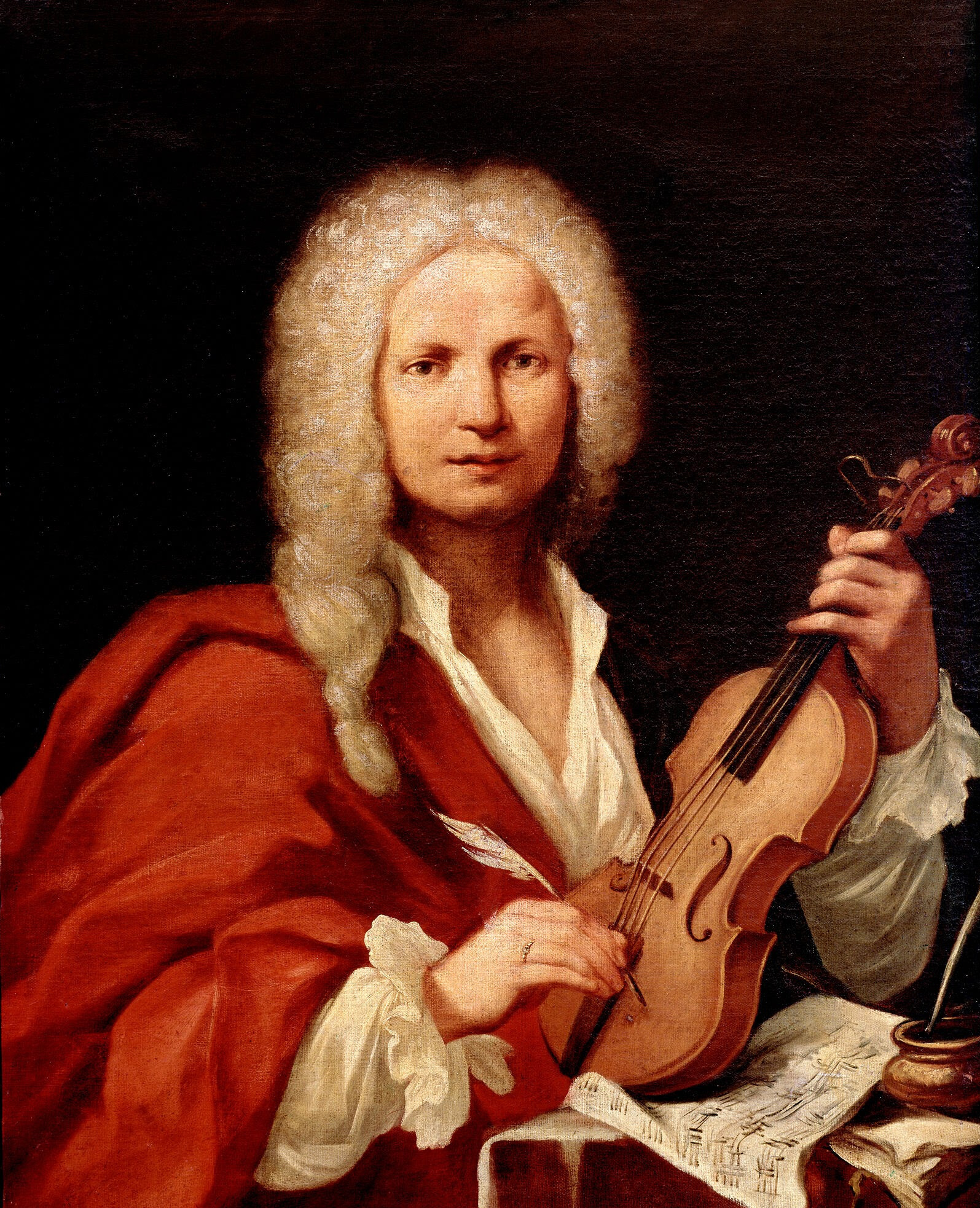 Antonio Lucio Vivaldi was born in 1678 in Venice and is recognized as one of the greatest Italian composers of his time. Known as an Italian Baroque (composer from 1600-1750 following the Renaissance), teacher, and cleric, Vivaldi is highly regarded for his musical talent as a virtuoso violinist. Much of his music was comprised of mostly instrumental concerti for violin and would lead to his pivotal work Le quattro stagioni (The Four Seasons) and the more titular of the four "La primavera" (Spring). In regards to his style, Vivaldi channeled innovative techniques such as incorporating harmonic contrasts, melodies, and themes. As a result, many of his pieces are outstandingly flamboyant and exuberant.
Antonio Lucio Vivaldi was born in 1678 in Venice and is recognized as one of the greatest Italian composers of his time. Known as an Italian Baroque (composer from 1600-1750 following the Renaissance), teacher, and cleric, Vivaldi is highly regarded for his musical talent as a virtuoso violinist. Much of his music was comprised of mostly instrumental concerti for violin and would lead to his pivotal work Le quattro stagioni (The Four Seasons) and the more titular of the four "La primavera" (Spring). In regards to his style, Vivaldi channeled innovative techniques such as incorporating harmonic contrasts, melodies, and themes. As a result, many of his pieces are outstandingly flamboyant and exuberant. Composed approximately between 1720 and 1723, The Four Seasons were inspired by landscape paintings by Italian artist Marco Ricci. The final composition was released in 1725 as part of a set of twelve concerti entitled Il cimento dell'armornia e dell'inventione (The Test of Harmony and Invention). Each season contains three movements with tempos that occur in the following order: fast-slow-fast. Additionally specific moods and scenes are depicted and tandem to the environment and time of year. Furthermore, to emphasize the individuality of the seasons, Vivaldi published accompanying poems to detail what the pieces were intended to portray and evoke. According to music terminology, this technique is said to be program music, or setting a musical narrative to any form of writing.
La Primavera
L'estate
L'autunno
Autumn immediately shifts the scene to a new subject and more awe-filled mood. By now, Vivaldi has made the center of attention a peasant celebrating the pleasure and wealth from a good harvest. Surrounding him are his peers rejoicing with lively dance and song, along with the scent of liquor granted by the god of harvest Dionysus. From an allegro tempo and frequent crescendos the piece transcends into the movement of adagio molto, or very slowly. The mild and pleasant air leads all to abandon their festivities and relax into the delights of tranquil sleep. As sweet sleep settles in for several minutes Vivaldi switches the pace once more to allegro. Hunters set forth with hounds chasing after a fleeing deer. Though the animal is quick, it eventually succumbs to fear and exhaustion, and falls prey to several gun wounds. The hunters move in, with the deer greeted by eternal slumber.
L'inverno
Vivaldi's Four Seasons are by far musical masterpieces in themselves, and unmistakable in any context. Each piece contains characteristics and qualities that are amplified just by even the smallest amount of instruments. The composer accurately captured the five senses of the many subjects in his works, along with the specific moods and emotions all seasons generate in the viewer/listener. However, one cannot simply visualize the beauty that the instrumentation solely depicts. The accompanying narratives provide further insight and symbolism into each piece, and, in a way, trace the sentiments one feels throughout the year. By creating such a musical wonder, Vivaldi essentially wants the listener to know that each season produces a unique and individual experience. His pieces might generate perspectives and
imagery not specifically listed in the narratives. Additionally, the narratives are not always exclusive to their assigned season. As evident by the music itself, overlaps are common and simulate the winding minutes of the month and temperatures. If one were to listen to the concerto in its entirety, it is obvious that Vivaldi will have captured the true essence of nature and its powerful effect on humanity.
Amazing blog.....
ReplyDeleteTuxera NTFS Crack
Vivaldi Crack
GridinSoft Anti-Malware 4.2.2 Crack
ReplyDeleteI am very impressed with your post because this post is very beneficial for me and provide a new knowledge to me
axcrack
crackbay
suripc
prosvst
crackproz
softcrack
cractivator
vstlicensed